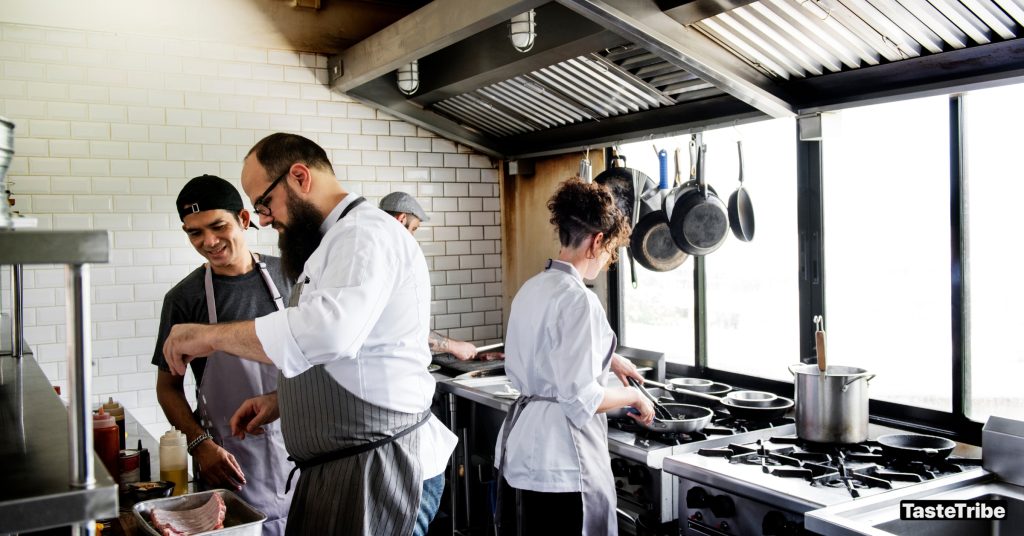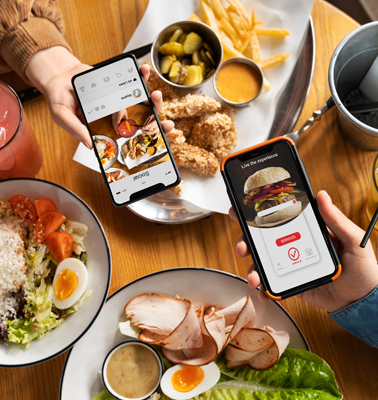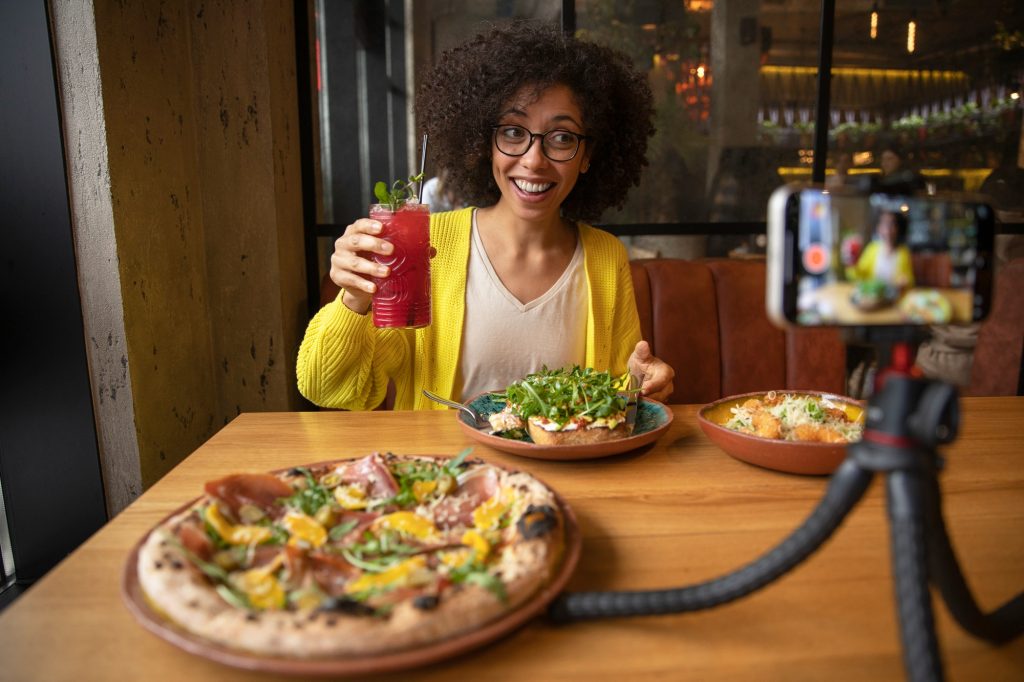
Virtual kitchens, also known as ghost kitchens, have exploded in popularity over the past few years. These delivery-only concepts have emerged as a game-changer in the restaurant industry, driven by shifts in consumer behavior, technological advancements, and the growing demand for convenience. While the rise of virtual kitchens presents exciting opportunities, it also introduces challenges for traditional brick-and-mortar restaurants.
In this blog, we’ll explore the rise of virtual kitchens and what it means for traditional restaurants, from new operational models to evolving consumer preferences.
1. What Are Virtual Kitchens?
Defining the Virtual Kitchen Concept
Virtual kitchens, or ghost kitchens, are food production facilities focused exclusively on fulfilling online delivery orders. They don’t have a dining area for guests to sit in, and many don’t offer takeout options either. Instead, they operate out of commercial kitchens specifically designed for delivery. These kitchens often host multiple restaurant brands or menus under one roof, allowing businesses to streamline operations and cut down on the costs associated with running a physical restaurant space.
By eliminating the need for front-of-house operations, ghost kitchens allow restaurants to focus solely on delivery, reducing expenses like waitstaff wages, rent for prime locations, and maintaining an attractive physical space. Virtual kitchens can also host multiple brands, sometimes with different cuisines, running from the same kitchen to maximize resources and efficiency.
The Role of Third-Party Delivery Platforms
The rise of third-party delivery platforms such as Uber Eats, DoorDash, and Grubhub has fueled the growth of virtual kitchens. These platforms provide the infrastructure for restaurants to reach customers without needing a traditional storefront. Ghost kitchens capitalize on this by allowing brands to focus entirely on delivery, meeting the ever-growing demand for convenience and speed.
For restaurants using virtual kitchens, these third-party platforms become critical marketing and distribution channels, helping them reach new audiences without the need for a physical presence in densely populated or expensive urban areas.
2. The Boom in Virtual Kitchens: Why Now?

Consumer Shift Toward Online Ordering
The concept of virtual kitchens isn’t entirely new, but several factors have contributed to their recent rise in popularity. One of the primary reasons is the shift in consumer behavior toward online ordering. Consumers are increasingly turning to online platforms to order food, and this trend has only accelerated in recent years. According to recent reports, online food delivery revenue is expected to grow by more than 10% annually, reaching over $300 billion globally by 2027.
The convenience of having meals delivered straight to their doorsteps has made online ordering a preferred option for many diners. In a world where time is often a luxury, customers appreciate the ability to enjoy restaurant-quality food from the comfort of their own homes.
Lower Operating Costs for Virtual Kitchens
Virtual kitchens don’t require a dining area, front-of-house staff, or prime real estate, which significantly reduces operating costs. These savings allow businesses to offer competitive pricing and experiment with multiple brands or menu items without the same financial risks associated with a traditional restaurant. This lower barrier to entry has attracted entrepreneurs looking to test new food concepts and established brands looking to expand delivery operations without the overhead of new restaurant locations.
By operating in less expensive locations, such as industrial areas or shared kitchen spaces, virtual kitchens can reduce rental costs while focusing on high-margin delivery services. This cost-efficiency gives virtual kitchens a distinct advantage over traditional restaurants with significant fixed expenses.
The Lasting Impact of COVID-19
The COVID-19 pandemic was a major catalyst for the acceleration of delivery-first models. During periods of lockdown and social distancing, dining in was no longer an option, and restaurants had to quickly pivot to delivery and takeout to survive. Even as restrictions have eased, many consumers continue to prefer delivery, making ghost kitchens a natural fit for the post-pandemic world.
This shift in consumer habits is likely to persist, as many people have become accustomed to the convenience of ordering food online. As a result, virtual kitchens have solidified their place in the modern foodservice ecosystem, offering a delivery-focused alternative to the traditional dining experience.
Read More: Sustainability Trends in the Restaurant Industry for Modern Diners
3. How Virtual Kitchens Are Disrupting Traditional Restaurants
Increased Competition for Online Visibility
With the explosion of virtual kitchens, competition for online visibility has intensified. Third-party delivery apps prioritize restaurants based on factors such as proximity, popularity, and customer reviews. This makes it challenging for traditional restaurants to stand out in a crowded marketplace. Ghost kitchens, which often house multiple brands in one location, have the ability to flood these platforms with diverse offerings, sometimes overshadowing brick-and-mortar restaurants.
In addition, the ability of virtual kitchens to quickly adapt to trends, launch new concepts, and experiment with menus gives them an edge over traditional restaurants that may be slower to innovate.
Pressure to Adopt New Technologies
To stay competitive in the face of rising delivery demand, traditional restaurants are being forced to adopt new technologies to streamline their delivery services. This includes investing in online ordering platforms, optimizing menus for delivery, and ensuring fast and reliable fulfillment of orders. For some traditional restaurants, this shift has been a challenging adjustment, particularly for those that have long relied on dine-in business.
Restaurants must also invest in delivery management systems, digital marketing strategies, and customer relationship management tools to keep up with the evolving food delivery landscape. For restaurants unfamiliar with these technologies, the learning curve can be steep, and the financial investment can be significant.
Designing Delivery-Friendly Menus
One of the key advantages virtual kitchens have over traditional restaurants is their ability to design menus specifically for delivery. Many ghost kitchens create dishes optimized for transport, ensuring the food arrives at the customer’s door in the best possible condition. Traditional restaurants, on the other hand, often struggle to adapt their menus to delivery, as not all dishes travel well.
For example, delicate or highly perishable items may not fare well during transport, leading to a poor customer experience. To stay competitive, traditional restaurants must rethink their menus and make adjustments to ensure their food maintains quality when delivered.
Reduced Real Estate Pressure
The rise of virtual kitchens has reduced the need for expensive, high-traffic real estate. Traditional restaurants that rely on foot traffic in prime locations may find it harder to compete with delivery-only brands that can operate out of less expensive spaces. This reduction in real estate pressure is especially beneficial for virtual kitchens, which can operate multiple brands out of a single centralized kitchen.
Without the need to maintain a large, high-profile dining space, virtual kitchens can focus entirely on kitchen efficiency and delivery speed, maximizing profitability with lower overhead costs.
4. Opportunities for Traditional Restaurants

Expanding Reach with Delivery-Only Brands
Despite the challenges that virtual kitchens pose, they also present opportunities for traditional restaurants to expand their offerings. Many brick-and-mortar establishments are experimenting with launching their own virtual brands. By leveraging their existing kitchen space, they can create separate menus that are tailored for delivery, expanding their reach without the need for additional physical locations.
For example, a pizza restaurant could launch a virtual brand that focuses on pasta or sandwiches, catering to different tastes while using the same kitchen resources. By operating multiple brands under one roof, traditional restaurants can maximize their kitchen’s potential, cater to new demographics, and generate additional revenue streams without a significant investment.
Adapting to Changing Consumer Preferences
The rise of virtual kitchens reflects a broader shift in consumer preferences toward convenience and speed. Traditional restaurants that embrace these trends can enhance their competitiveness by offering seamless online ordering, curbside pickup, or exclusive delivery deals. Adapting to the modern diner’s need for fast, convenient options will allow brick-and-mortar establishments to retain and attract customers who might otherwise turn to virtual kitchens.
Offering flexible dining options, such as delivery-only specials, takeout bundles, or family-sized meals, can help traditional restaurants meet the demands of today’s time-strapped consumers.
Utilizing Ghost Kitchens for Strategic Expansion
Some traditional restaurants are partnering with ghost kitchen providers to expand into new markets without the high costs of opening a full-service restaurant. By using ghost kitchens in strategic locations, restaurants can reach new customers and test demand in different geographic areas without the risks associated with traditional expansion.
This allows traditional restaurants to grow their brand awareness in new cities or regions, even if they don’t have the infrastructure to open a full-scale restaurant. Virtual expansion can also provide valuable insights into customer preferences and market demand, helping traditional restaurants make more informed decisions when opening future physical locations.
5. The Future of Virtual and Traditional Restaurants
A Coexistence of Models
The rise of virtual kitchens isn’t expected to slow down anytime soon, but that doesn’t signal the end for traditional restaurants. Instead, the two models are likely to coexist, with each serving different needs in the evolving restaurant landscape. Virtual kitchens cater to the demand for delivery, while traditional restaurants offer a more personalized, immersive dining experience.
For traditional restaurants, the key to thriving in this new era will be embracing flexibility and innovation. Whether it’s launching a virtual brand, optimizing delivery systems, or focusing on offering a unique in-house dining experience that virtual kitchens can’t replicate, traditional restaurants will need to find ways to stand out and adapt to the changing market.
The Ongoing Evolution of Virtual Kitchens
Virtual kitchens, on the other hand, will continue to evolve, refining their operations and pushing the boundaries of what’s possible in the world of delivery-first dining. As technology improves, ghost kitchens are expected to integrate more automation, artificial intelligence (AI), and data-driven insights to streamline food production and delivery.
For instance, AI-driven kitchen management systems could optimize order preparation, ensuring faster delivery times and fewer mistakes. As these technologies advance, virtual kitchens will likely become even more efficient, further solidifying their role in the future of the restaurant industry.
Differentiation Through Dining Experiences
While virtual kitchens continue to disrupt the industry, traditional restaurants still have a powerful asset in their favor—the dining experience. While delivery offers convenience, it cannot replicate the ambiance, service, and personal interactions that customers experience when dining in. Restaurants that emphasize unique, memorable in-person dining experiences can differentiate themselves from virtual kitchens and create loyal customer bases.
Traditional restaurants that focus on experiential dining, offering things like live music, cooking classes, or themed events, will continue to draw customers who value more than just the food. By combining innovation with the ability to create unforgettable experiences, traditional restaurants can stay competitive in a market increasingly dominated by delivery-first options.
Read more: The Evolution of Food Blogging and What It Means for Restaurants
Conclusion
The rise of virtual kitchens has introduced a new era of competition and innovation in the restaurant industry. For traditional restaurants, this trend presents both challenges and opportunities. By adapting to consumer preferences, exploring new delivery-focused models, and leveraging the advantages of ghost kitchens, traditional restaurants can continue to thrive in a rapidly changing market.
The key for brick-and-mortar establishments is to remain flexible and embrace the digital-first approach that is driving the success of virtual kitchens. Whether through creating new virtual brands, optimizing delivery services, or doubling down on in-person dining experiences, traditional restaurants that stay ahead of the curve will be well-positioned for the future.
Ready To Get More Diners?